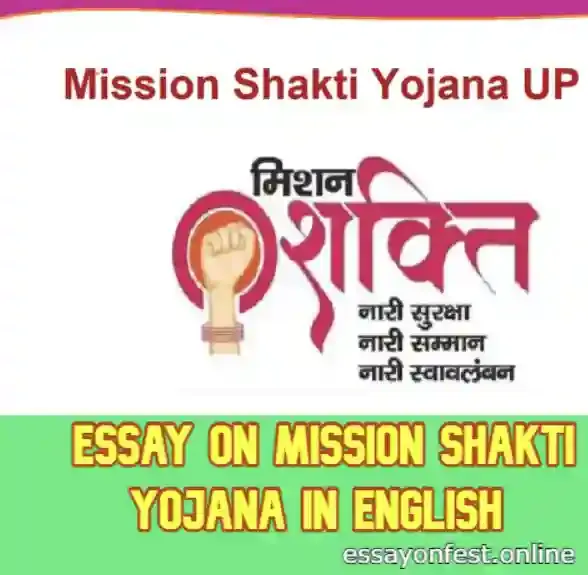Essay on Mission Shakti Yojana in English
Mission Shakti Yojana: Empowering Women for a Safer Tomorrow
The Ministry of Women and Child Development recently unveiled detailed guidelines for the 'Mission Shakti' scheme, marking a significant stride towards women's safety and empowerment. Set to be enforced from April 1, 2022, the scheme encompasses a range of initiatives aimed at fostering the security, dignity, and prosperity of women across India.
Mission Shakti, launched during the tenure of the 15th Finance Commission (2021-22 to 2025-26), represents a comprehensive approach towards women's empowerment. It serves as an umbrella scheme, integrating various programs and services tailored to address the multifaceted challenges faced by women in society.
Key Components:
1. Sambal: Ensuring Safety and Security
Under this component, Mission Shakti amalgamates schemes like One Stop Centre (OSC), Women Helpline (WHL), and Beti Bachao Beti Padhao (BBBP). Notably, it introduces Nari Adalats, women's collectives aimed at promoting alternative dispute resolution and fostering gender justice within families and society.
2. Samarthya: Fostering Empowerment
Samarthya, dedicated to women's empowerment, consolidates schemes such as Ujjwala, Swadhar Greh, and Working Women Hostel, with necessary modifications. Additionally, it includes the National Creche Scheme and Pradhan Mantri Matru Vandana Yojana (PMMVY) under the Integrated Child Development Services (ICDS) umbrella. The introduction of Gap Funding for Economic Empowerment further enhances the scheme's efficacy.
Services & Activities Involved:
Mission Shakti offers a spectrum of services catering to women's needs, ranging from emergency assistance to long-term care and support. It includes a national toll-free number, temporary shelter, legal aid, psycho-social counseling, medical assistance, and police facilitation through One Stop Centres. Institutional care is also provided through facilities like SakhiNiwas or Working Women Hostels.
Objectives of Mission Shakti:
The primary objectives of Mission Shakti revolve around providing comprehensive care, support, and assistance to women affected by violence or distress. It aims to establish robust mechanisms for rescue, protection, and rehabilitation of women, enhancing accessibility to government services, and raising awareness about gender-based crimes and legal provisions. Collaborative efforts with partner ministries, departments, states, and UTs seek to ensure convergence of policies and programs, fostering an enabling environment for women's safety and empowerment across sectors.
Furthermore, Mission Shakti endeavors to combat gender-biased practices, ensure the well-being and education of the girl child, and alleviate the care burden on women. By promoting skill development, capacity building, financial literacy, and access to microcredit, the scheme aims to enhance female labor force participation and foster economic independence.
In conclusion, Mission Shakti represents a pivotal initiative towards creating a more inclusive and equitable society where women can thrive without fear or constraint. By addressing systemic challenges and fostering collaborative efforts, the scheme heralds a brighter and safer future for women across the nation.
Also read: 10 Lines On Atal Pension Yojana in English
Also read: Essay on Atmanirbhar Bharat
Also read: 10 Lines On Barriers To The Women Empowerment In India
Also read: Digital India for New India Letter
Also read: Essay on Women Empowerment in English
Also read: Essay on Aatm Nirbhar Bharat in English
THANK YOU SO MUCH

Comments
Post a Comment